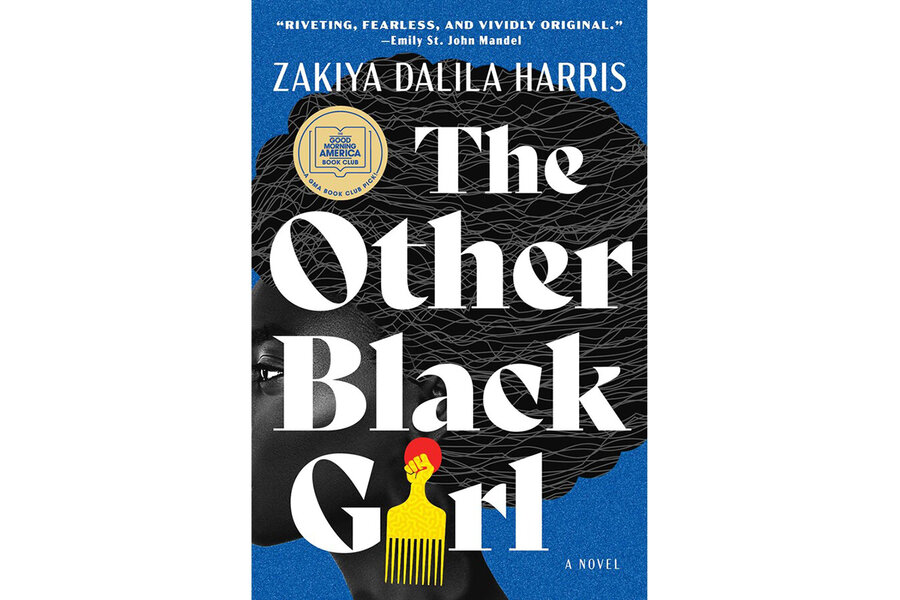‘The Other Black Girl’ picks apart tokenism in white work spaces
Loading...
For many people of color working in professional environments, the experience of being the “only one” is common. And being the only Black person or person of color in an otherwise heterogeneous office often comes with many burdens, such as enduring microaggressions alone or lacking allies or comrades to advocate for you or who understand your experiences.
Nella Rogers, the main character in Zakiya Dalila Harris’ debut novel “The Other Black Girl,” is no stranger to the burdens that come along with being the “only one.” An aspiring book editor, Nella works in a dull and exploitative job as an editorial assistant at Wagner Books, a well-known publisher in Manhattan. Though Nella is hard-working, she’s been toiling away in her position without proper accolades or recognition for her talent. On top of that, Nella finds it hard to form genuine connections with her officemates because there’s no one who understands what it means to be Black in the workspace.
But everything changes for Nella when another Black woman is hired. Enter Hazel-May McCall, a young Black woman from Boston with long dreads, a sharp sense of style, and a boyfriend who’s a famous artist. Hazel immediately entrances everyone at the office, including Nella’s superior, Vera, and she manages to quickly form friendships with their white colleagues and bosses. Nella, glad to have another Black person in the office, is excited at first by Hazel’s arrival. But it soon becomes clear that Hazel isn’t interested in forming a genuine friendship with Nella. Though both women are Black, that’s where the similarities between the two end.
Nella and Hazel’s burgeoning friendship-turned-rivalry also parallels an earlier alliance at Wagner Books – that of editor Kendra Rae Phillips and writer Diana Gordon. In the 1980s, Phillips and Gordon were also the only two Black women at Wagner, and they joined forces to publish Gordon’s book, “Burning Heart,” a novel that catapulted both women to fame. In fact, “Burning Heart” is what drew Nella to work at Wagner Books in the first place. She idolizes Phillips and wants to be like her, hoping to help usher in a new cadre of Black writers. Ironically, Hazel is also a fan of “Burning Heart.” While Hazel and Nella briefly connect over their adoration for the book and the women behind its creation, their paths quickly diverge – just like Gordon and Phillips, decades earlier.
At the center of the novel is hair. The smell of a hair product called Brown Buttah is what first tips Nella off to the fact that there is finally another Black woman in the Wagner office. Both women defy “professional” standards by wearing natural hairstyles and forgoing weaves or perms. Hazel even offers to help the less-experienced Nella with her afro. Hair seems to be another point of connection between the two women, a bridge that Nella hopes to use to get closer to Hazel. But even hair eventually becomes the vehicle through which Hazel and a shadowy, villainous organization called the Other Black Girls (or OBGs for short) obtain and maintain their power.
While “The Other Black Girl” may come off as another office drama novel, there is something much more sinister skulking beneath the surface. Though Nella and Hazel initially bond over their experiences of being Black in the office, Nella becomes aware that Hazel’s “code-switching” is more like a complete switch in character and morals. Nella’s boss asks for Nella’s feedback on a novel penned by one of Wagner’s leading authors. But a racist representation of a Black character in the book puts Nella in a tough spot, forcing her to choose between speaking up or remaining agreeable around her bosses at Wagner. Eventually, Nella decides to voice her concerns – but it backfires.
Harris does an excellent job at unraveling intricate and complicated topics about Black life in predominantly white work spaces. Drawing from her own experiences working at the publishing house Alfred A. Knopf, Harris unflinchingly builds a workplace that feels unsettlingly familiar – both in its goal to secure “diversity hires” and its simultaneous refusal to change anything about its internal culture or its systemic inequities. It’s a conversation that is increasingly pertinent, as companies and organizations across the country attempt to address their racist and sexist practices in increasingly inauthentic ways after last year’s protests against police brutality.
While “The Other Black Girl” captures the frustration that so often stems from working in predominantly white offices, it also highlights another awful facet of that work culture. Tokenism forces Black people into an unwilling competition with each other; they are often forced to jostle to be the “only one,” because so often there is only room for one. Blackness does not always equal kinship, and it’s this lesson that Nella must learn the hard way. Forced to choose between career advancement or her own integrity, Nella wrestles with her sense of self and belonging. Ultimately, she teeters on the edge of losing both.
The true horror of “The Other Black Girl” is that there is an undeniable truth in it. Black people must choose between tolerating an office culture that wants us to change, or working to change that office culture at the expense of job security and social rejection. And Black people must reckon with the fact that while there are many Nellas in the world, there are also many Hazels: those who are willing to do whatever it takes to ensure that there is no “other Black person” in the office. While many people dread being tokenized, there is a quiet horror to the idea that some people actually enjoy it. By the end of Harris’ novel, Black readers will be forced to ask this hard and singular question: Which one are you?








